Are you familiar with Balkan food? Not as many people are because it isn’t a trendy cuisine. Plus, it comes from a region in Europe that doesn’t get as many visitors as more popular destinations like France or Spain.
Balkan food may not be as pretty as French or Japanese food but what it lacks in aesthetics and refinement it more than makes up for with flavor and soul. Heavy on spiced meats, bread, stuffed vegetables, and rakija, it’s European comfort food at its most filling and gratifying.
If you’re visiting Southeast Europe or just curious about Balkan food, then described in this article are twenty of the best and most popular dishes to look for in the Balkans.
Save This on Pinterest!
No time to read this Balkan food guide now? Click on the save button and pin it for later!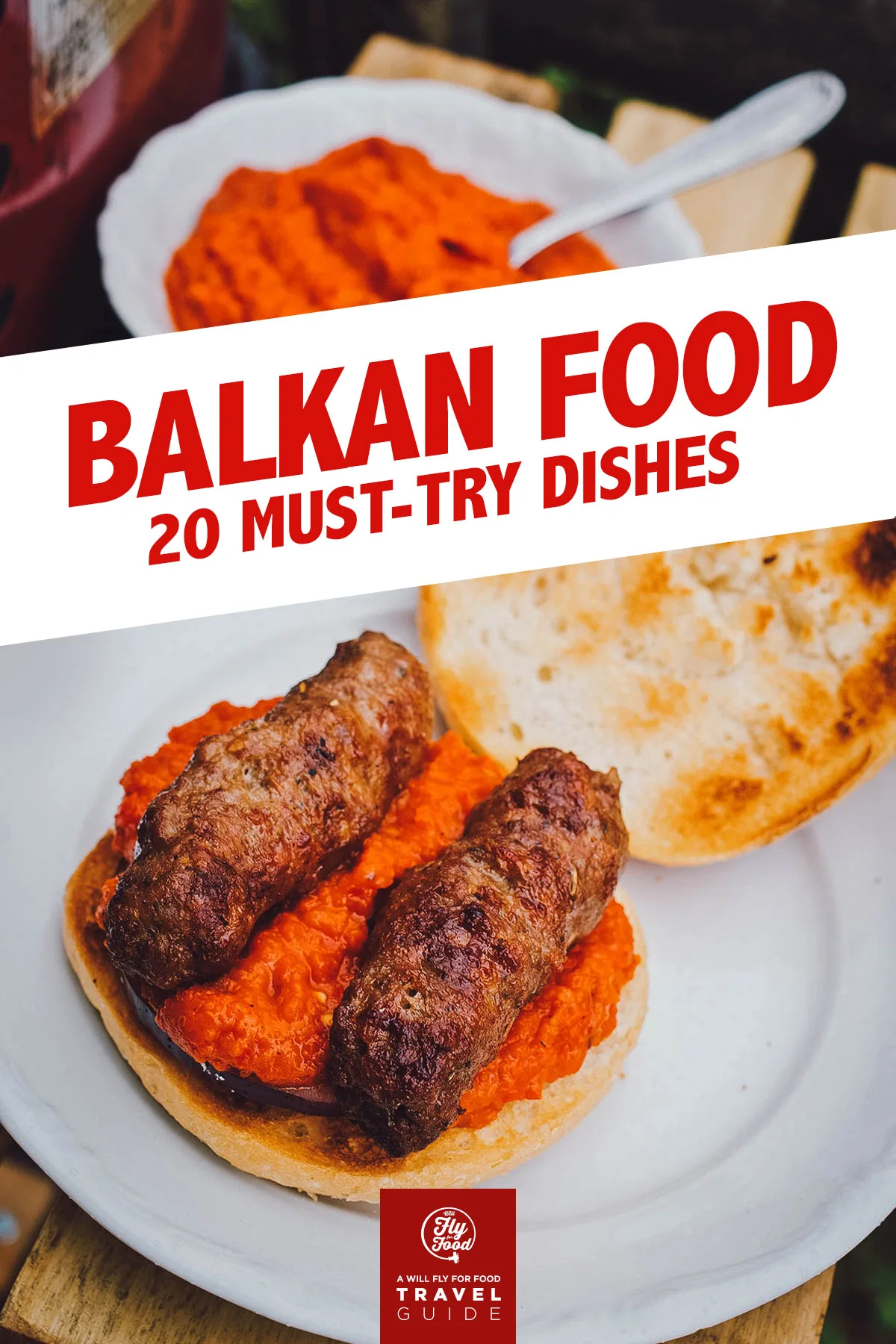
Photo by ccat82
WHAT ARE THE BALKANS?
The Balkans refers to a geographic/geopolitical region in southeastern Europe. It takes its name from the Balkan Mountains and can also be referred to as the Balkan Peninsula or Southeast Europe. Depending on which map you look at, the region consists of up to thirteen countries that are completely or partially located within the peninsula.
Because the Balkans aren’t strictly defined by geography, its definition varies between sources. Some define it purely by geography while others include political, historical, social, and cultural factors as well. The thirteen countries that can be considered part of the Balkan Peninsula are the following:
Albania
Bosnia and Herzegovina
Bulgaria
Croatia
Kosovo
Montenegro
North Macedonia
Serbia
Greece*
Turkey*
Romania**
Moldova**
Slovenia***
*Maps that define the region using a combination of geographic, political, historical, and cultural factors generally do not consider Greece and Turkey to be part of the Balkans. Only maps that define the Balkans strictly by geography will include the mainland of Greece and a small portion of Turkey (northwest of the Sea of Marmama).
**Geographically, Moldova isn’t part of the Balkan Peninsula. Economically and politically, it’s more aligned with republics of the former Soviet Union than it is with the Balkan states, but some consider it as Balkan because of its historical and cultural ties to Romania. In the eyes of some people, Romania shouldn’t be part of the Balkans either because only a very small portion of it (about 5%) lies within the Balkan Peninsula. But culturally, Romania and Moldova can indeed be considered Balkan.
***Similarly, only a small portion of Slovenia lies within the Balkan Peninsula (anywhere between 5-25%, depending on the source) but its historical ties with the Balkan states often merits its inclusion.
WHAT IS BALKAN FOOD?
Balkan food refers to the regional cuisines of countries wholly or partially belonging to the Balkan Peninsula. Its founded on Ottoman cuisine and draws from the culinary traditions of Turkey, Greece, Persia, and the Arab countries. Influences from Mediterranean and Central European cuisines are also prevalent.
Balkan cuisine is noted for its diversity and strong intense flavors. Pickled vegetables, small hot peppers, and feta cheese (Balkan cheese) are common ingredients while the sač, a large bell-shaped lid that allows for convection cooking, is a frequently used device in many Balkan kitchens.
Popular Balkan foods include stuffed vegetables, burek, cevapi, and pljeskavica. They’re common throughout the peninsula though they often differ by name and preparation. Meze is enjoyed in various forms while rakija, a type of strong fruit brandy, is enjoyed as a digestif everywhere in the Balkans.
THE BEST OF BALKAN CUISINE
1. Ajvar
Ajvar is one of the most popular condiments in the Balkans. It’s a smokey relish or sauce made with roasted red bell peppers, eggplant, and olive oil. It’s typically used as a spread or side dish and can range in flavor from sweet to piquant to very hot.
Ajvar is usually prepared in mid-autumn when bell peppers are at their freshest and most abundant. It exists in various forms throughout the Balkans where it goes by different names like ljutenica, pindjur, zacuscă, and kyopolou.
Interestingly, the name ajvar stems from the Turkish word havyar, meaning “caviar”. Before the 20th century, a significant amount of sturgeon was produced in the waters of the Danube. During that time, ajvar referred to caviar and was widely consumed in Belgrade.
When caviar production declined, a red pepper relish was offered as a substitute under the name red ajvar or Serbian ajvar. Today, it’s one of the most commonly paired condiments with many Balkan foods.
RECIPE: Ajvar
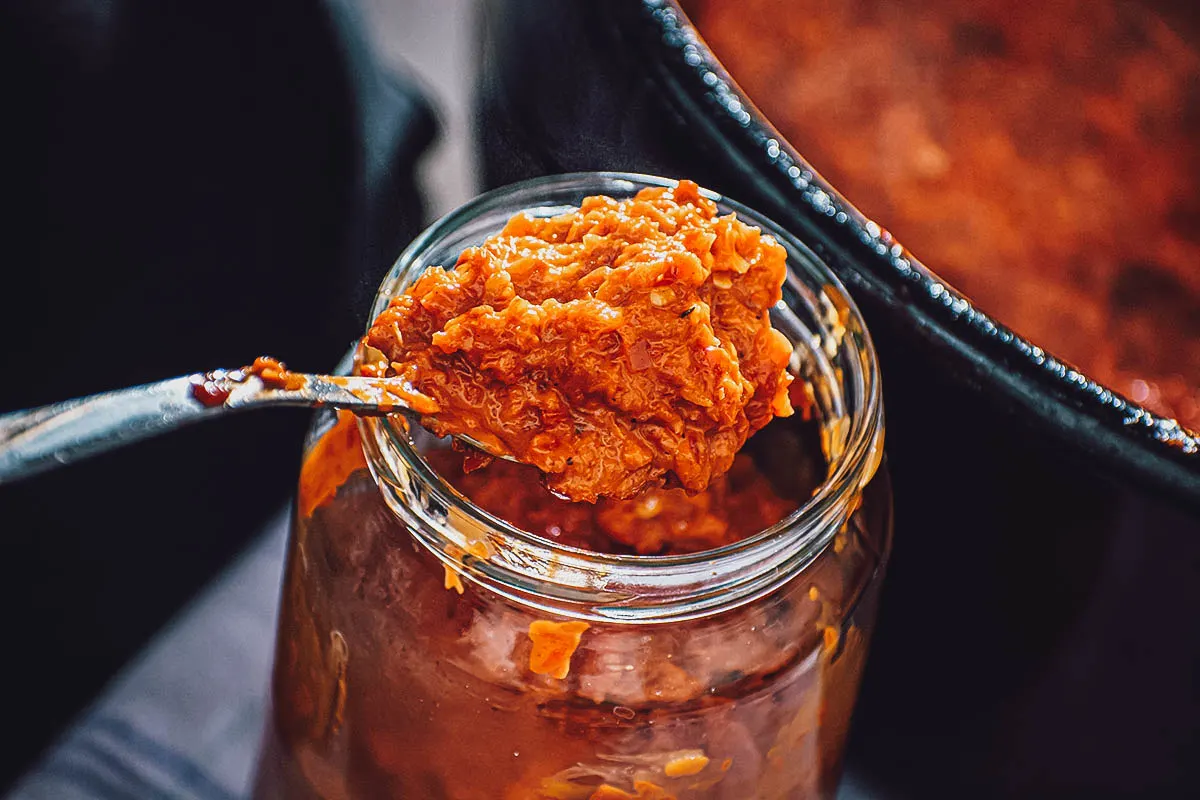
Photo by radebg
2. Meze
Meze refers to a series of small dishes enjoyed as an appetizer or snack in the Balkans, Western Asia, and North Africa. Often enjoyed with alcoholic drinks, it’s widely consumed throughout the Balkan Peninsula where it can be made with a variety of different components.
In Serbia, Bosnia and Herzegovina, and Montenegro for example, meze platters can be made with kajmak, ajvar, salami, suho or suvo meso (cured pork or beef), kulen (paprika-flavored cured sausage), and various pastries.
In southern Croatia, Herzegovina, and Montenegro, more Mediterranean forms of cured meat like pršut and pancetta are common.
In Bulgaria, meze often includes lukanka (spicy sausage), sujuk (dry and spicy sausage), sirene (white brined cheese), kyopolou, and Shopska salad.
Pictured below is a meze platter from a restaurant in Istanbul.
HOW-TO-GUIDE: Preparing a meze platter
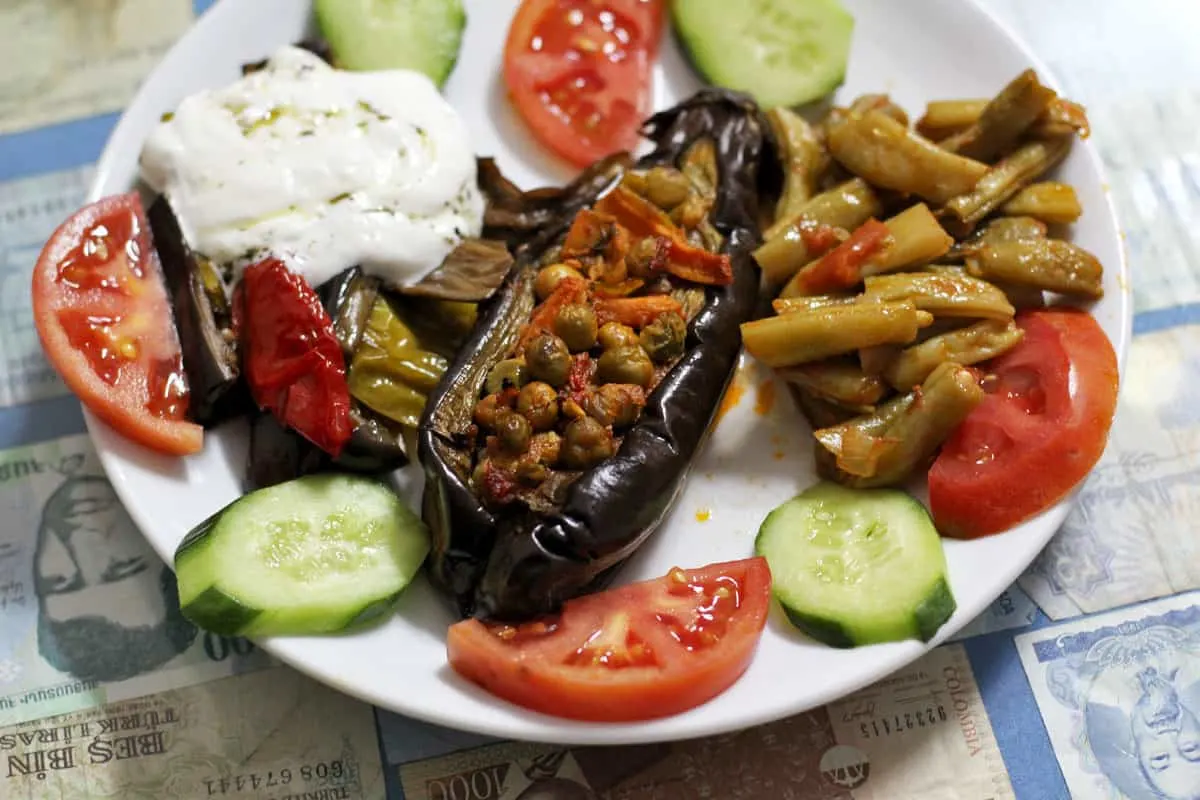
Kajmak is a type of unripened cheese made from water buffalo, cow, sheep, or goat’s milk. As described, it’s popular in Bulgaria, Bosnia and Herzegovina, Montenegro, and Serbia where it’s often enjoyed as meze with bread or as a condiment with various dishes like cevapcici and pljeskavica.
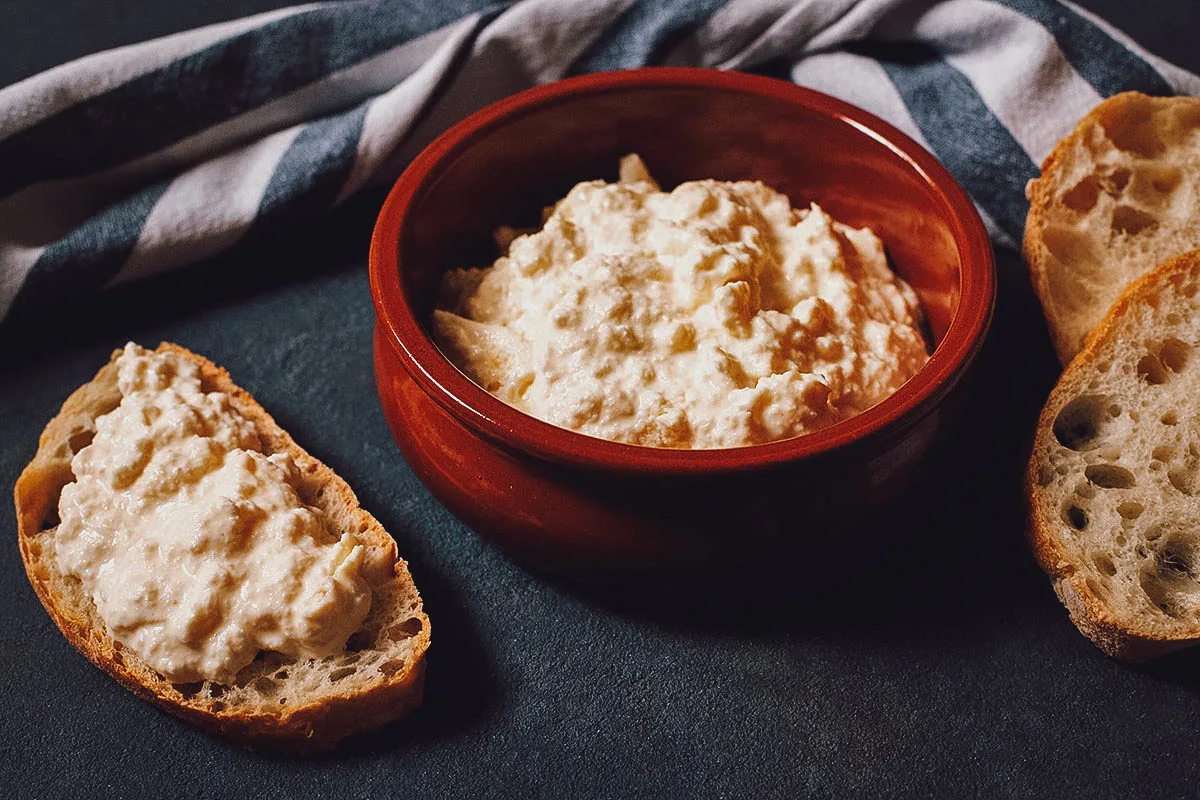
Photo by DariaKM
3. Dolma
Dolma is one of the most beloved Balkan foods. It refers to a family of stuffed dishes popular throughout the Balkans, the South Caucasus, Central Asia, and the Levant. They’re usually made with some type of vegetable like bell pepper, zucchini, tomato, or eggplant that’s been hollowed out and filled with rice, meat, and other ingredients.
In the Balkans, there’s a sub-type of dolma called sarma. It refers to dolma dishes that are wrapped in leafy vegetables. Instead of hollowing out vegetables and filling them with ingredients, sarma dishes are made by wrapping or rolling the ingredients in vine or cabbage leaves. Dolma means “stuffed” or “filled” while sarma means “rolled” or “wrapped”.
RECIPE: Dolmas

Photo by fanfon
Vegetables are the most common vessels but dolma can be made with other ingredients as well like fruit, seafood, and offal. Pictured below is midye dolma, a popular Turkish dish made with mussels stuffed with herbed rice, pine nuts, and currants.
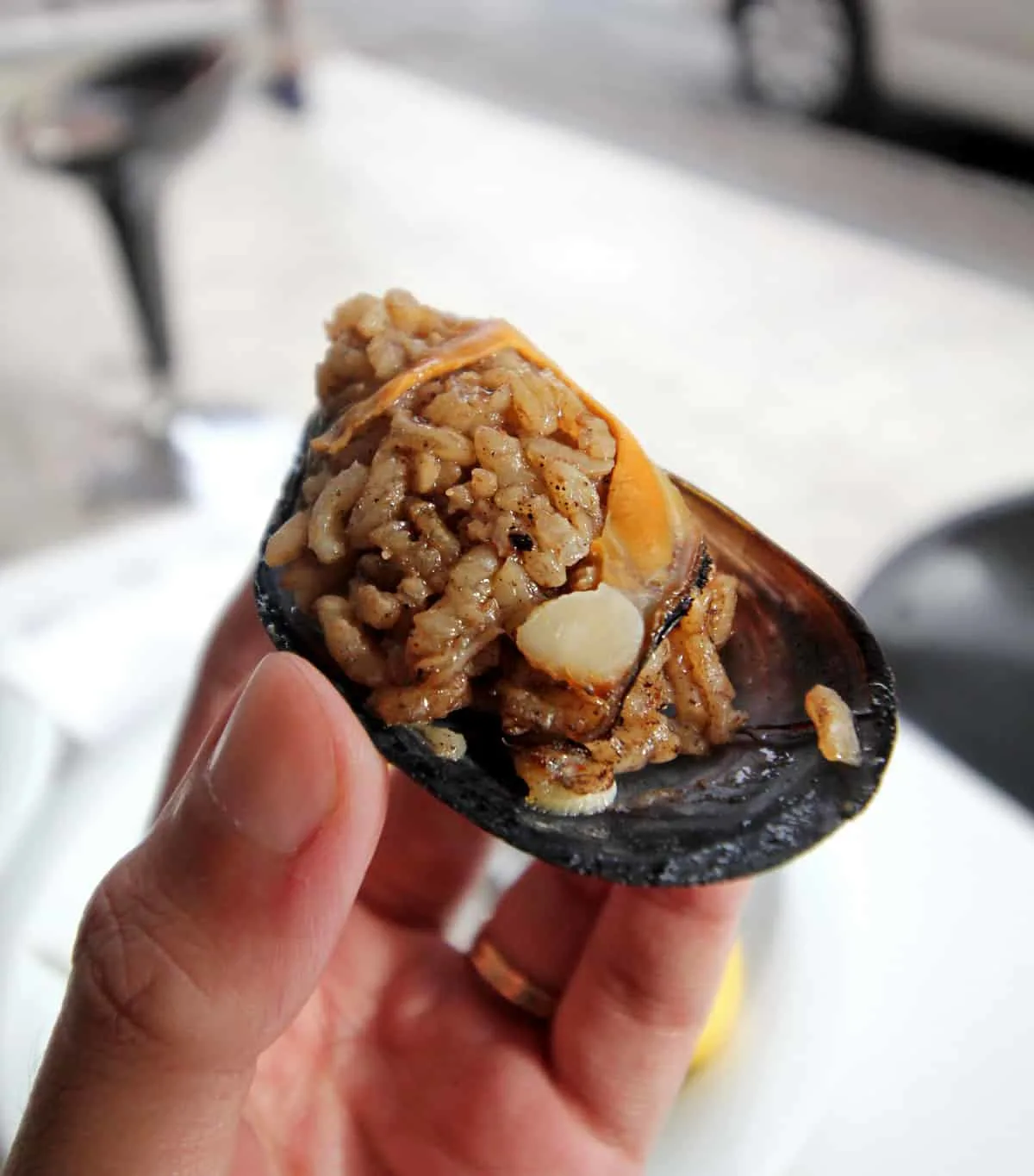
4. Sarma
As described, sarma is a type of dolma made with cabbage leaves wrapped around a filling consisting of rice or bulgur, minced meat, herbs, and seasonings. It can be made with vine or chard leaves but the most popular version is wrapped inside pickled cabbage leaves.
Sarma is widely consumed throughout the Balkans, Central Europe, the South Caucasus, and the Middle East. It’s especially popular in winter and is often prepared on special occasions and holidays.
RECIPE: Sarma

Photo by jabiru
In Turkey, sarma made with grape leaves is called yaprak sarma or yaprak dolma. In Greece, it’s called dolmas (large) or dolmadaki (small). From what I understand, the term sarma isn’t used in Greece.

5. Burek
Burek refers to a family of Ottoman pastries made with a thin flaky dough like filo or yukfa dough. It’s typically filled with meat, cheese, potatoes, and leafy vegetables like spinach. It comes in many forms and is widely consumed throughout the Balkans, the South Caucasus, Central Asia, the Levant, and in some parts of Eastern and Central Europe.
In the Balkans, burek goes by many names. Bosnian burek is referred to as pita and is perhaps one of the most well-known versions of burek in the Balkans. It’s filled with meat and rolled in spiral form before being cut into sections for serving. It can also be filled with other ingredients like cottage cheese (sirnica), spinach and cheese (zeljanica), and potatoes (krompiruša).
In Romania, burek is known as plăcintă. In Bulgaria, it’s called banitsa while in Armenia, it’s referred to as boereg or byorek. Armenian boereg is made with phyllo dough that’s folded into triangles and filled with cheese, spinach, or ground beef.
Burek is known as boureki in Greece and börek or böreği in Turkey, where the dish may have originated from. You’ll find a wide variety of börek in Turkey, like this patatesli börek we enjoyed in Cappadocia.
RECIPE: Burek
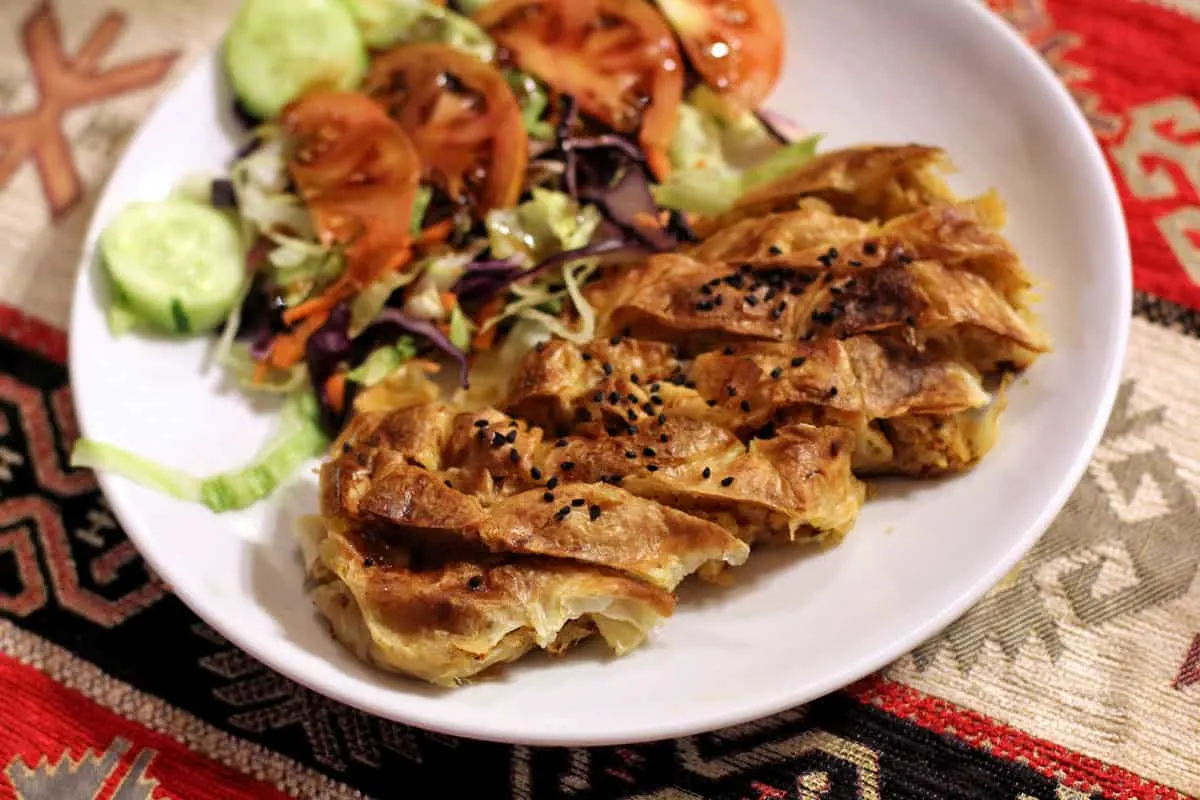
6. Banitsa
Banitsa is the Bulgarian form of burek and could very well be the most beloved traditional dish in the country. It’s a flaky pastry made by layering a mixture of whisked eggs, yogurt, white brined cheese (sirene or feta), and vegetables between filo pastry and then baking it in an oven.
To prepare, sheets of filo pastry are laid out flat and sprinkled with filling. The sheet is rolled up tightly and then formed into a spiral in the baking pan. This process is repeated again and again with each subsequent roll being wrapped around the spiral in the pan. Once you have a large spiral, it’s drizzled with sunflower oil or melted butter and then baked.
Banitsa is a culturally significant Bulgarian dish that’s traditionally prepared on Christmas and New Year’s Eve. Lucky charms and well-wishes are inserted into the banitsa before it’s baked. These charms are meant to usher in good health, wealth, and prosperity in the coming year.
I don’t know if these cultural traditions extend to other countries as well but banitsa is also consumed in Macedonia, Serbia, and Greece. The Macedonian version is called maznik while the Serbian version is known as gibanica. The Greek version is referred to as tiropita.
RECIPE: Banitsa
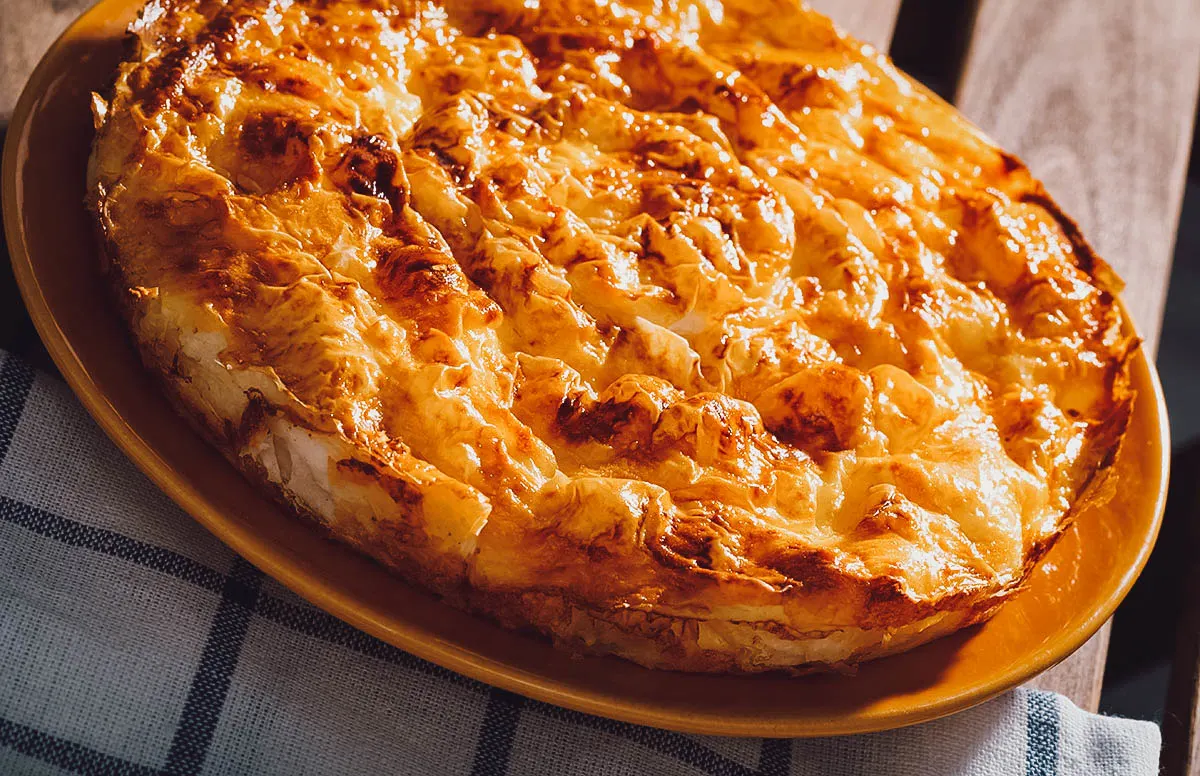
Photo by Jim_Filim
7. Gözleme
Gözleme refers to a type of Turkish flatbread filled with various ingredients like meat, vegetables, tubers, mushrooms, cheese, eggs, herbs, and spices. Like börek, it can be enjoyed throughout Turkey where it exists in many regional variations.
To prepare, unleavened dough is rolled thin and filled with different ingredients before being sealed and cooked over a sač griddle. It’s traditionally a breakfast dish though it’s often enjoyed throughout the day as a snack.
Traditional versions of gözleme are made with ingredients like spinach, feta, and minced beef, but these days, it’s common to find trendier versions made with things like chocolate, walnuts, honey, or smoked salmon.
RECIPE: Gozleme
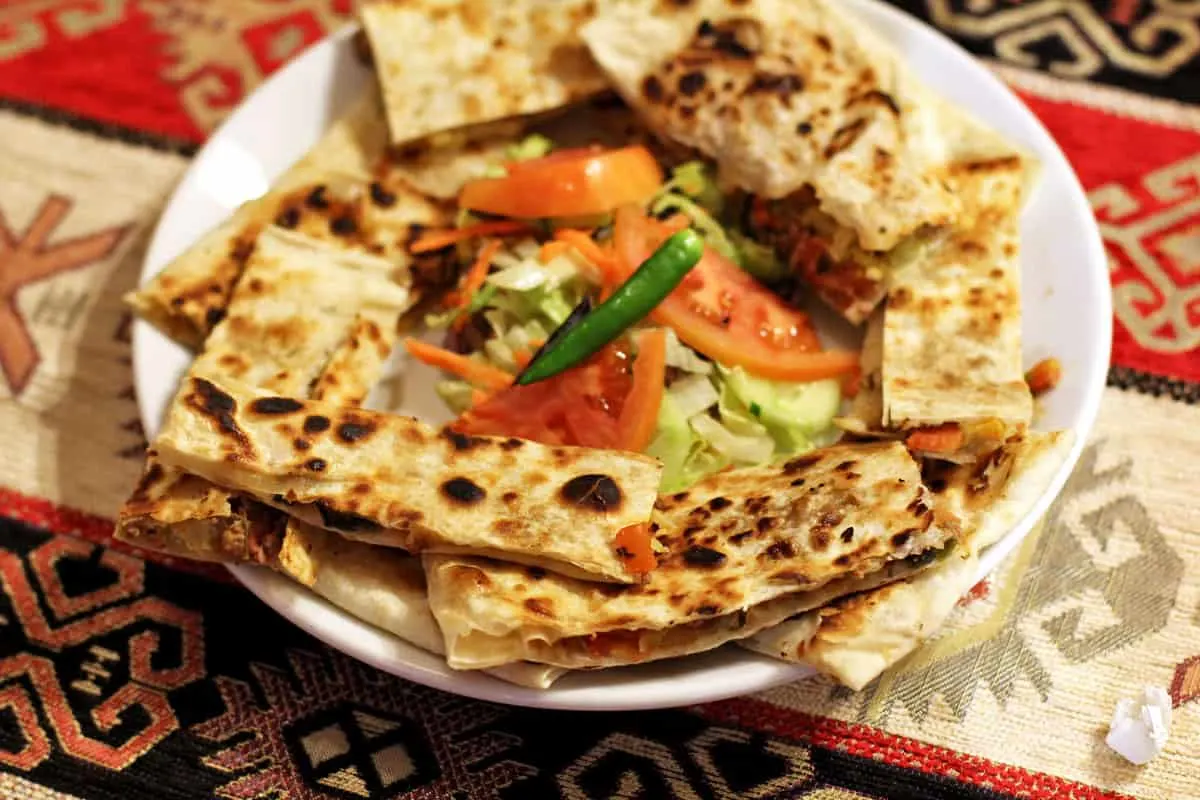
8. Saganaki
Saganaki refers to a small frying pan used in Greek cuisine. It also refers to the series of dishes made using this pan. Shrimp saganaki and mussels saganaki are examples of dishes made using this pan, but by far the most popular dish is an appetizer of fried cheese.
Saganaki is typically made with a variety of cheeses like halloumi, graviera, kasseri, or kefalotyri. The cheese is fried in the saganaki before being served with lemon wedges, pepper, and bread.
Outside of Greece, particularly in North America, you’ll find flambeed versions of this dish called flaming saganaki. The cheese is set on fire and extinguished with a spritz of lemon juice before serving. It’a bit of tableside theater that you won’t find in Greece.
RECIPE: Saganaki
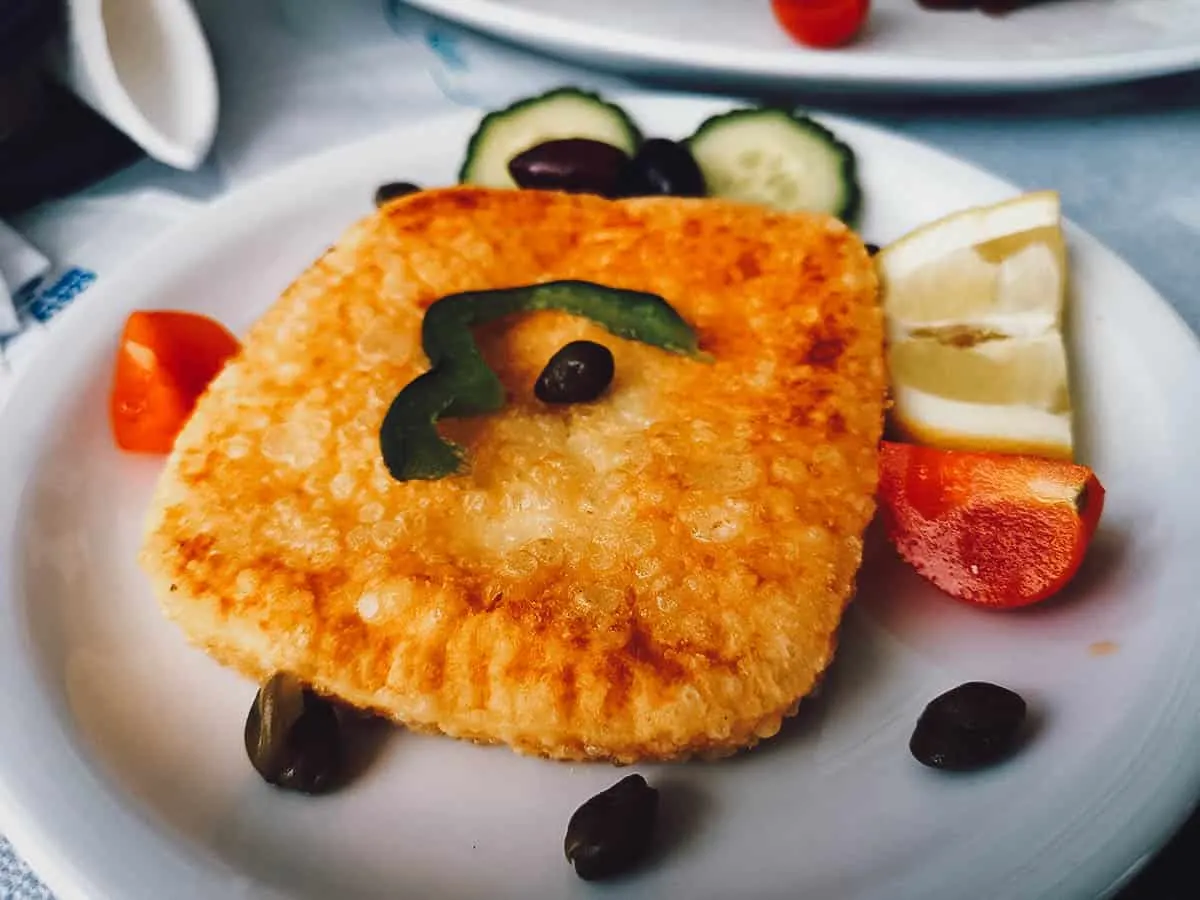
9. Pršut
Pršut refers to a type of dry-cured ham that’s widely consumed in Croatia, Bosnia and Herzegovina, Montenegro, Slovenia, and Serbia. It’s basically the Slavic version of Italian prosciutto that can be served smoked or not smoked. Pršut from Dalmatia, Herzegovina, and Serbia are usually smoked while versions from Slovenia, Istria, and Krk are not smoked.
Dalmatian pršut is a popular Croatian dish that’s commonly served as part of meze platters. In the mountain village of Njeguši in Montenegro, a special version called Njeguški pršut is produced.
It’s made by curing ham with sea salt for about three weeks, and then pressing it for another three weeks to remove any excess liquid. It’s then lightly smoked and dried in the cool mountain air for three months before being matured. The entire process takes about a year to complete.
RECIPE: Prsut and skripavac
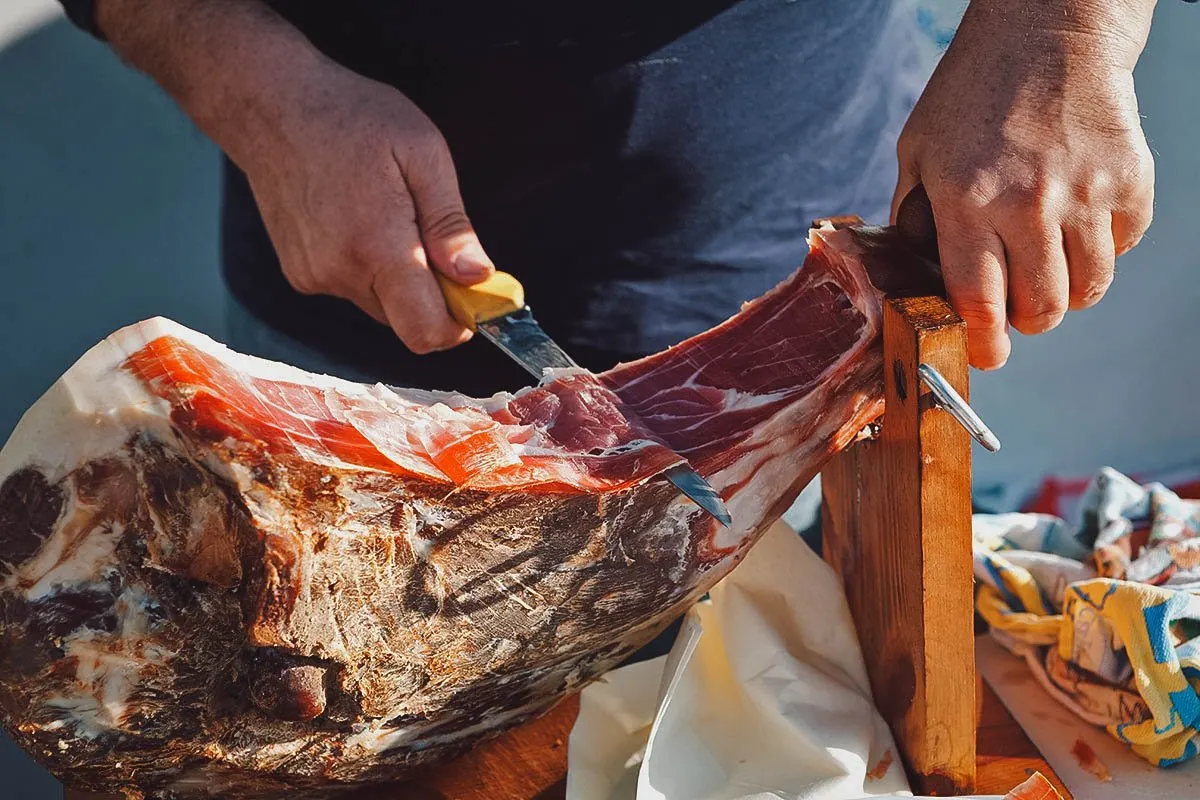
10. Ćevapčići
Ćevapčići (or ćevapi) is one of the most popular and recognizable Balkan foods. It refers to a heavily seasoned and grilled minced meat dish that’s commonly eaten in Montenegro, North Macedonia, Croatia, Kosovo, Slovenia, and Albania. It’s especially popular in Serbia and Bosnia and Herzegovina where it’s regarded as a national dish.
Ćevapčići originated from the kitchens of the Ottoman Empire. The name ćevap is derived from the Turkish word kebab. It’s typically served in groups of five to ten pieces on a plate, or in flatbread sandwiches with ajvar, kajmak, onions, cottage cheese, sour cream, and red pepper.
Meat content and seasonings vary from region to region but ćevapčići is usually made with a mixture of beef, lamb, pork, and mutton.
RECIPE: Cevapcici
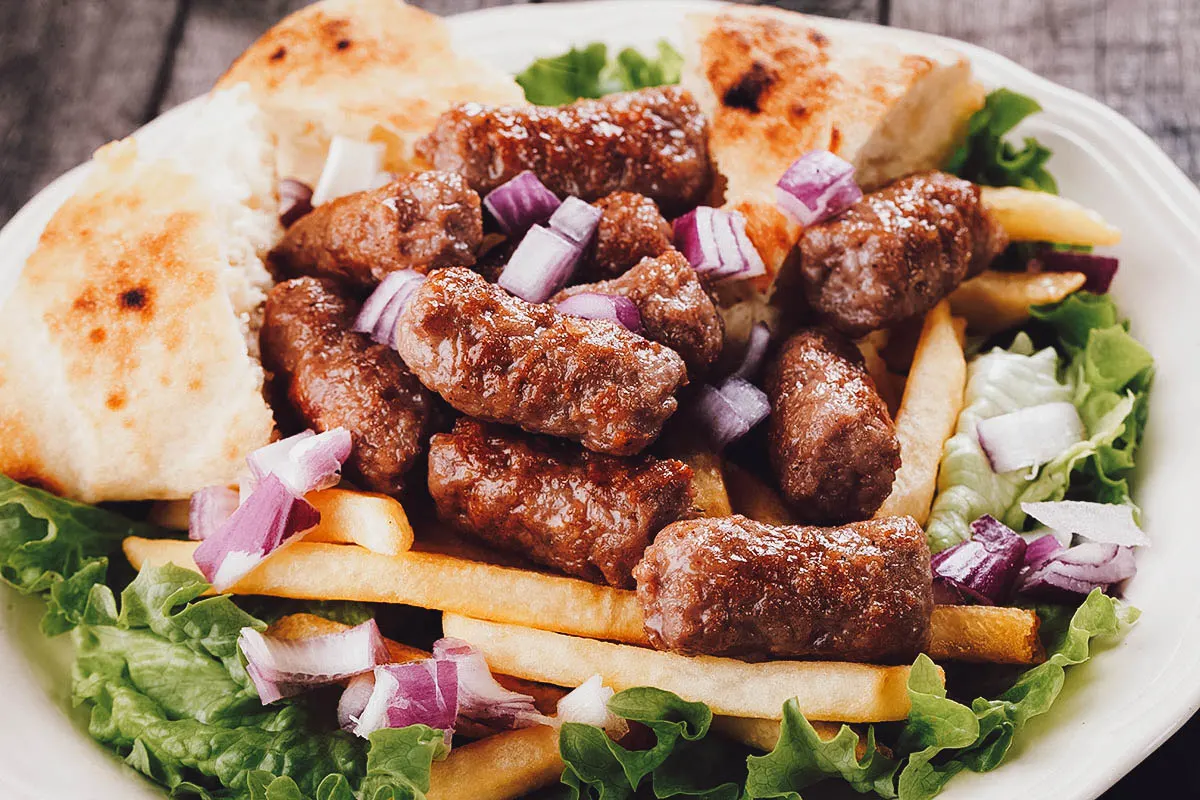
Photo by igordutina
11. Pljeskavica
Like ćevapčići, pljeskavica is a comforting grilled meat dish that’s widely consumed in the Balkans. It’s common in Bosnia and Herzegovina, Montenegro, North Macedonia, and Croatia, but it’s especially popular in Serbia where it’s considered a national dish.
Similar to a hamburger, pljeskavica consists of a pork, beef, and lamb patty served in lepinja flatbread with ajvar, kajmak, onions, and urnebes (spicy cheese salad). The patty mixture is the same as ćevapčići and can also be served on a plate with various side dishes.
RECIPE: Pljeskavica

Photo by opavlova
12. Gyros
Gyros is one of the most well-known and beloved dishes in Greek cuisine. It refers to a dish made with grilled spiced meat shaved off a vertical rotisserie and served in a pita with fries, tomatoes, onions, and tzatziki. It’s basically the Greek version of the Turkish doner kebab, Lebanese shawarma, or Mexican tacos al pastor.
In Greece, pork and chicken are commonly used though gyros can be made with beef and lamb as well. Aside from being served in a pita like a wrap, the meat shavings can be served on a plate as well with pita, fried potatoes, vegetables, tzatziki, and lemon on the side.
The name gyros comes from the Greek γύρος which means “circle” or “turn”. It’s derived from the Turkish word döner, which also means “turn”. It’s believed that gyros is an adaptation of the doner kebab which found its way to Athens by way of immigrants from Anatolia and the Middle East shortly after WWII.
RECIPE: Chicken gyros

13. Goulash
Goulash refers to a stew made with meat and vegetables seasoned with paprika and other spices. It’s originally a Hungarian dish that’s become common throughout Central Europe and the Balkan Peninsula.
Goulash dates back to 9th century Hungary. Shepherds would sun-dry cooked meat before storing them in bags made from sheep stomachs. To turn it into a meal, they would just add water.
The name goulash stems from the Hungarian word gulyás, meaning “herdsman”. The dish came to be known as gulyáshús which refers to a meat dish prepared by herdsmen. Early versions of goulash were made with seasonings though paprika wasn’t introduced until the 16th century.
Goulash is popular in many parts of the Balkans like Albania, Croatia, and Slovenia, though it’s especially popular in Serbia. Compared to the Hungarian version, Serbian goulash is made with more meat. Beef, veal, or pork are commonly used though it can be made with game meats like venison and boar as well.
Serbian goulash is made with meat, onions, paprika, and lard (or oil), along with a slew of optional ingredients like garlic, parsley, bell peppers, carrots, tomatoes, and mushrooms. It’s usually served with macaroni or potato salad.
RECIPE: Goulash

14. Seafood
The Balkan Peninsula is bordered by the Adriatic Sea in the northwest, the Black Sea in the northeast, the Turkish Straits in the East, the Ionian Sea in the southwest, and the Aegean Sea in the south, so it only follows that fish and seafood figure prominently in the Balkan diet.
Coastal Balkan countries like Croatia, Albania, Montenegro, Greece, and Turkey are known to have excellent seafood. Some of the most popular dishes include grilled fish, mussels, oysters, octopus, squid, cuttlefish, and clams.
RECIPE: Croatian brodet (fish stew)
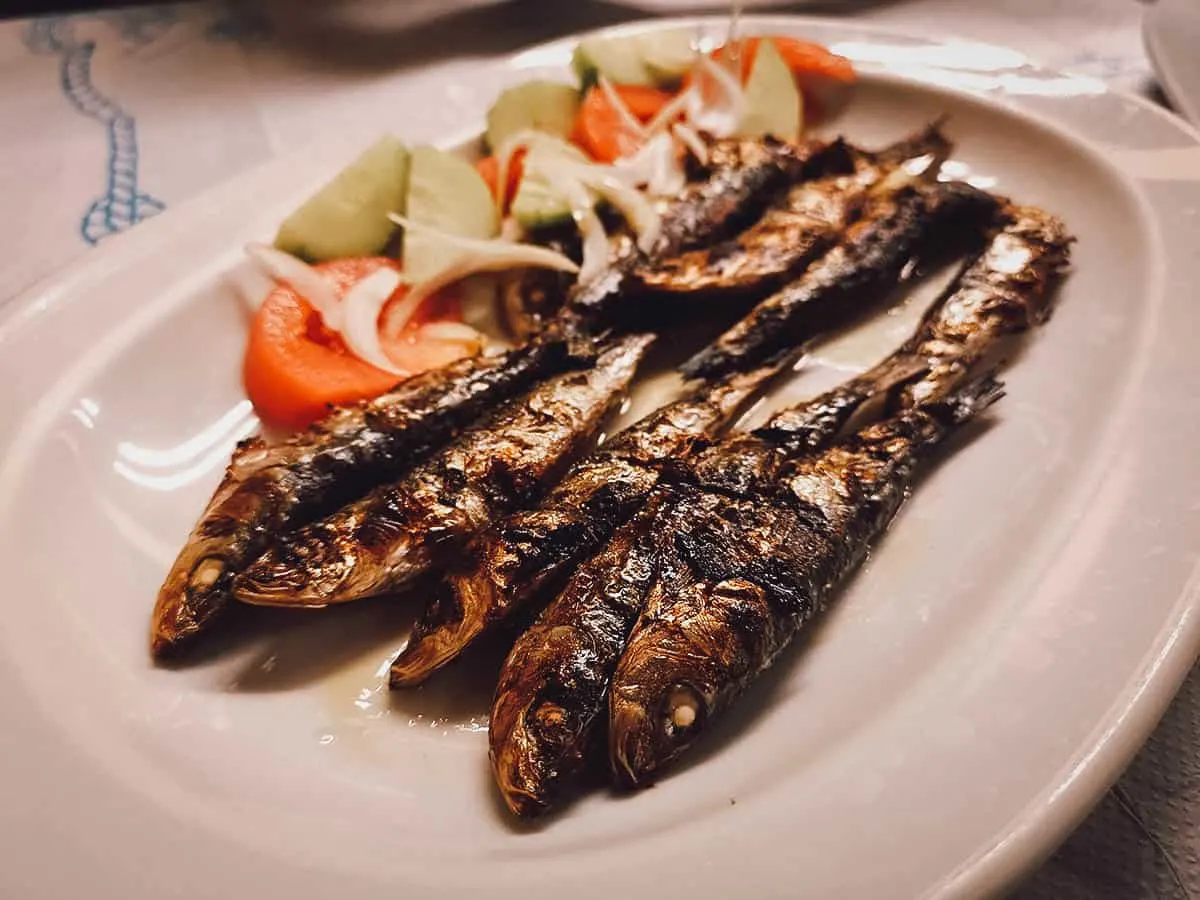
Grilled octopus tentacle drizzled in olive oil
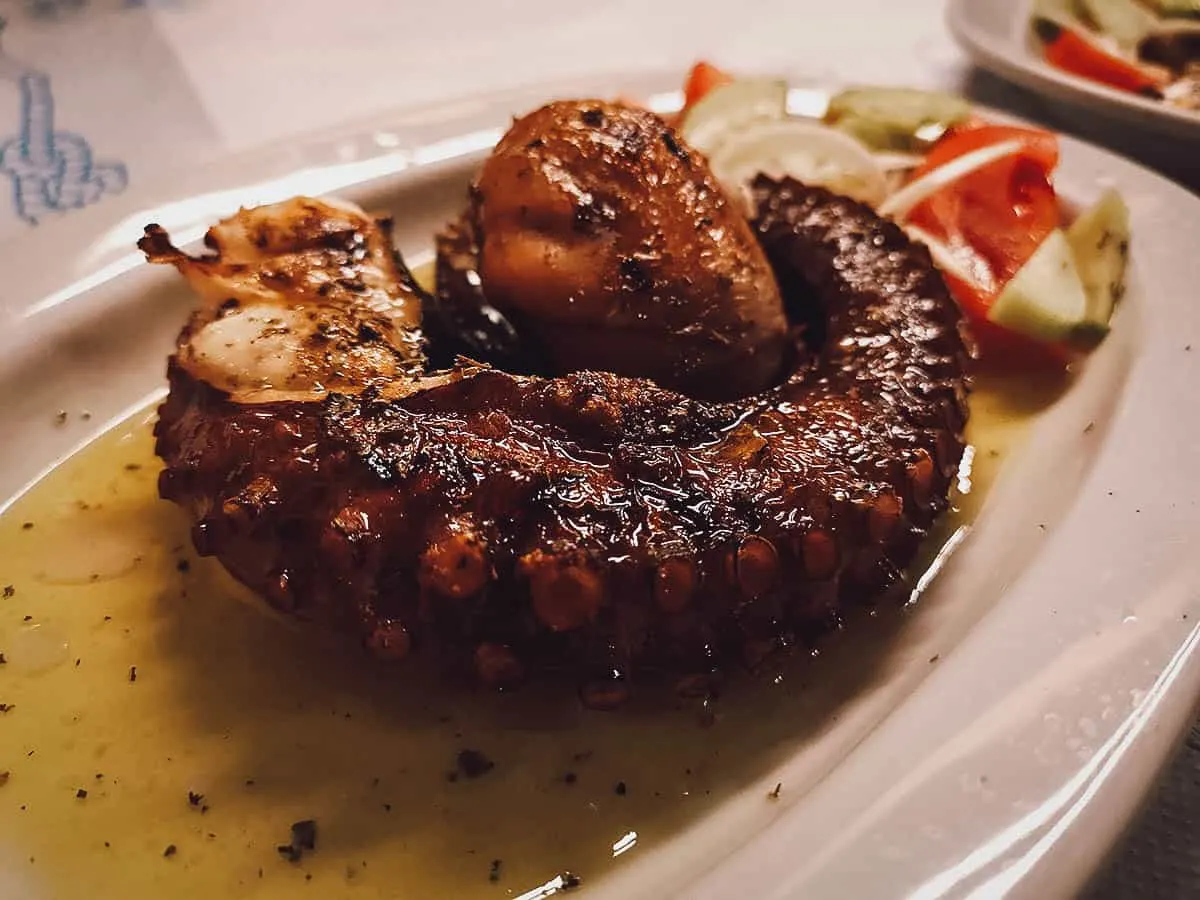
15. Mekitsa
Mekitsa refers to a Bulgarian flatbread made with deep-fried kneaded dough. It’s similar to Hungarian langos and is commonly eaten in Serbia (mekika or mekica) and North Macedonia (mekica or pitulica) as well.
Mekitsa dough is typically made with flour, eggs, yogurt, water, oil, salt, and a leavening agent. After the dough rises, it’s torn into small pieces and then flattened into discs before being deep-fried in oil. It’s commonly eaten for breakfast dusted with powdered sugar or served with jam, honey, sirene, or yogurt.
The name mekitsa is derived from the Slavic root mek, meaning “soft”, and is in reference to the flatbread’s texture.
RECIPE: Mekitsa
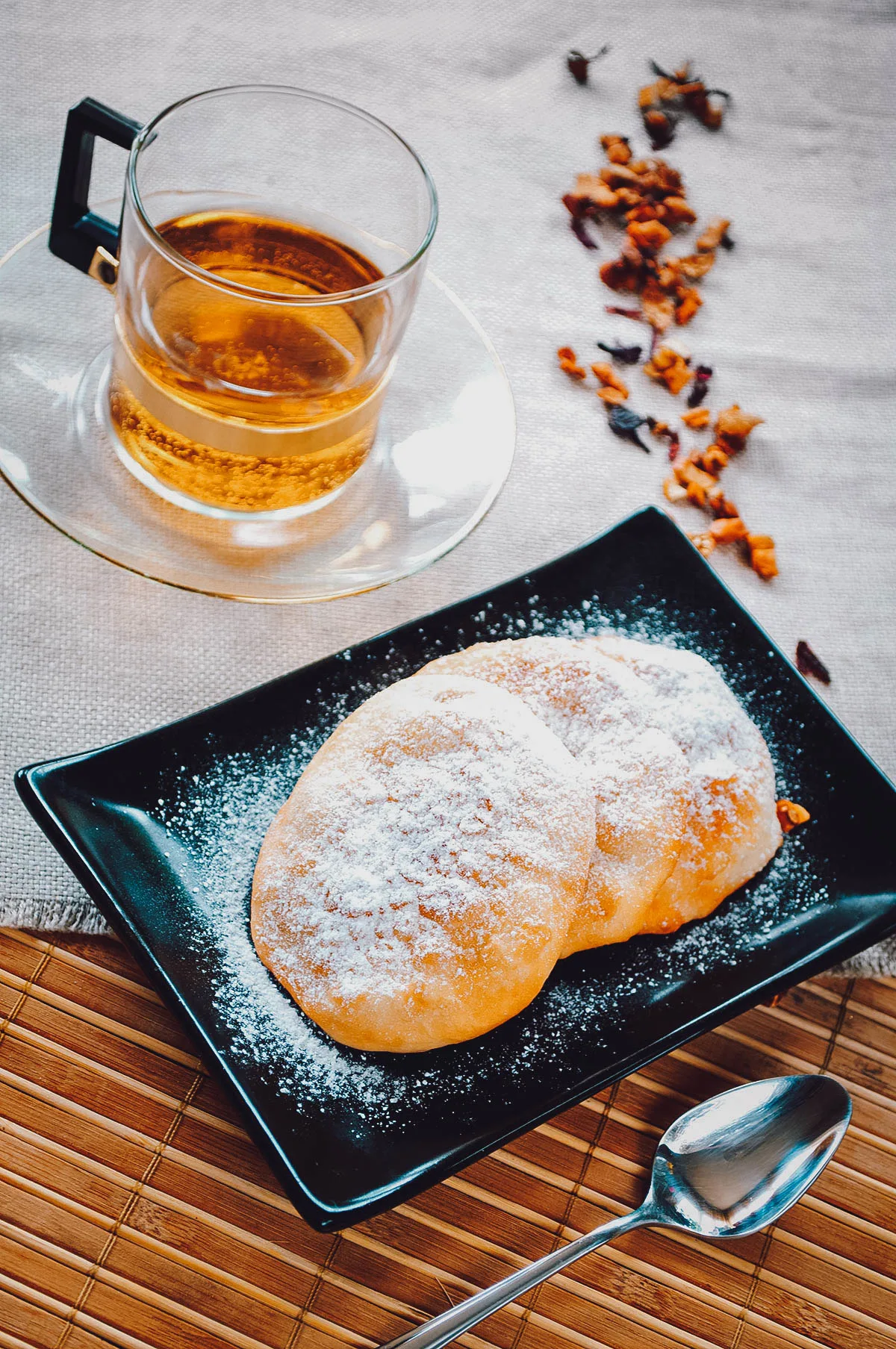
Photo by kpatyhka
16. Palačinka
Palačinka is a type of thin pancake that’s widely consumed in the Balkans and in parts of Central and Eastern Europe. It’s made with eggs, flour, milk, and sugar and is very similar to French crepes, with the main difference being that palačinka batter can be cooked immediately unlike crepe batter that’s left to rest for at least an hour.
Originally a Greco-Roman dish, palačinka varies in preparation and goes by many names like palatschinke, palaccinka, palaçinka, clătite, and palacsinta. It can be served hot or cold, sweet or savory, plain or filled.
When eaten for dessert, it’s often dusted with powdered sugar or drizzled with chocolate sauce, and filled with a variety of ingredients like fruit jam, dried or fresh fruit, sweet cottage cheese, raisins, walnuts, and almonds.
It can also be served unsweetened as a savory dish filled with different ingredients like meat, vegetables, mushrooms, and cheese.
RECIPE: Palacinka
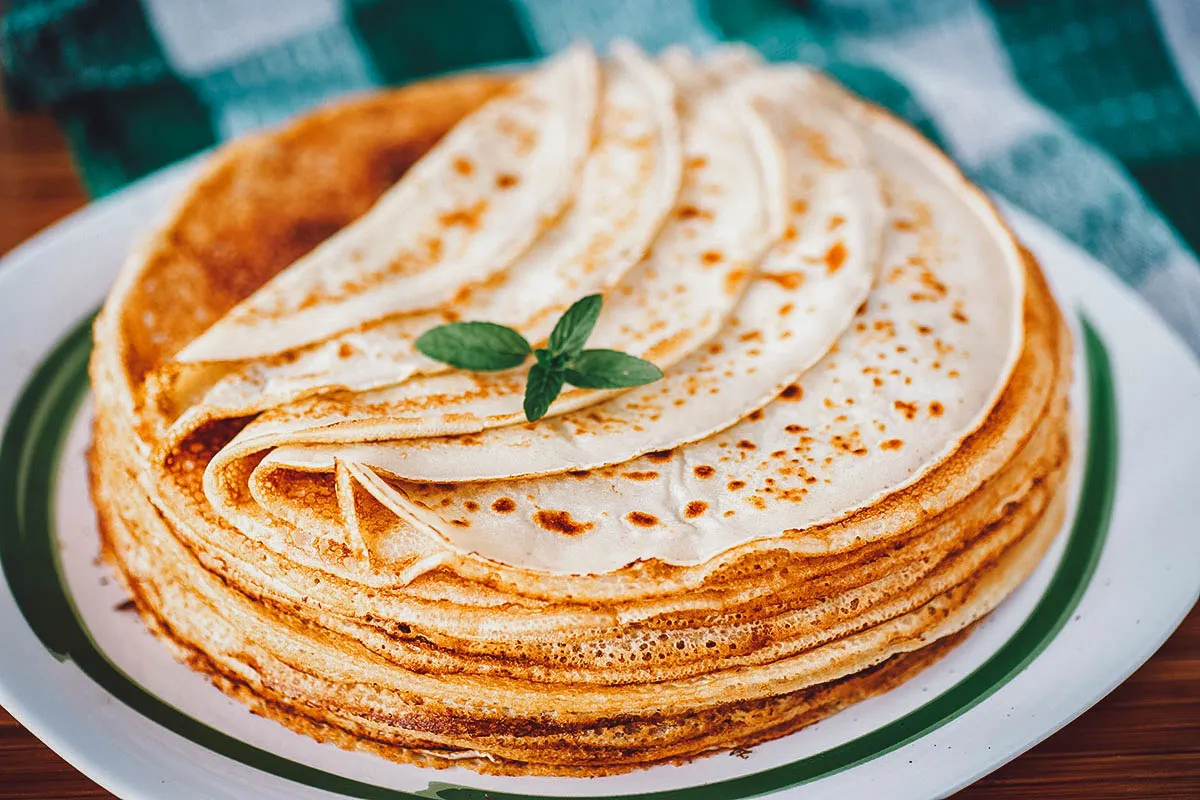
Photo by Rawlik
17. Krofne
Krofne is a type of airy doughnut made with sweet fillings like fruit jam, chocolate, custard, Nutella, butter, or cinnamon. It’s basically the Balkan version of American jelly-filled doughnuts.
Krofne is enjoyed throughout the Balkans but it’s especially popular in Serbia, where it’s heavily consumed before the Great Lent, and in Croatia (krafne) and Slovenia (krofi) where it’s a favorite snack during the annual winter festival or Carnival.
RECIPE: Krofne
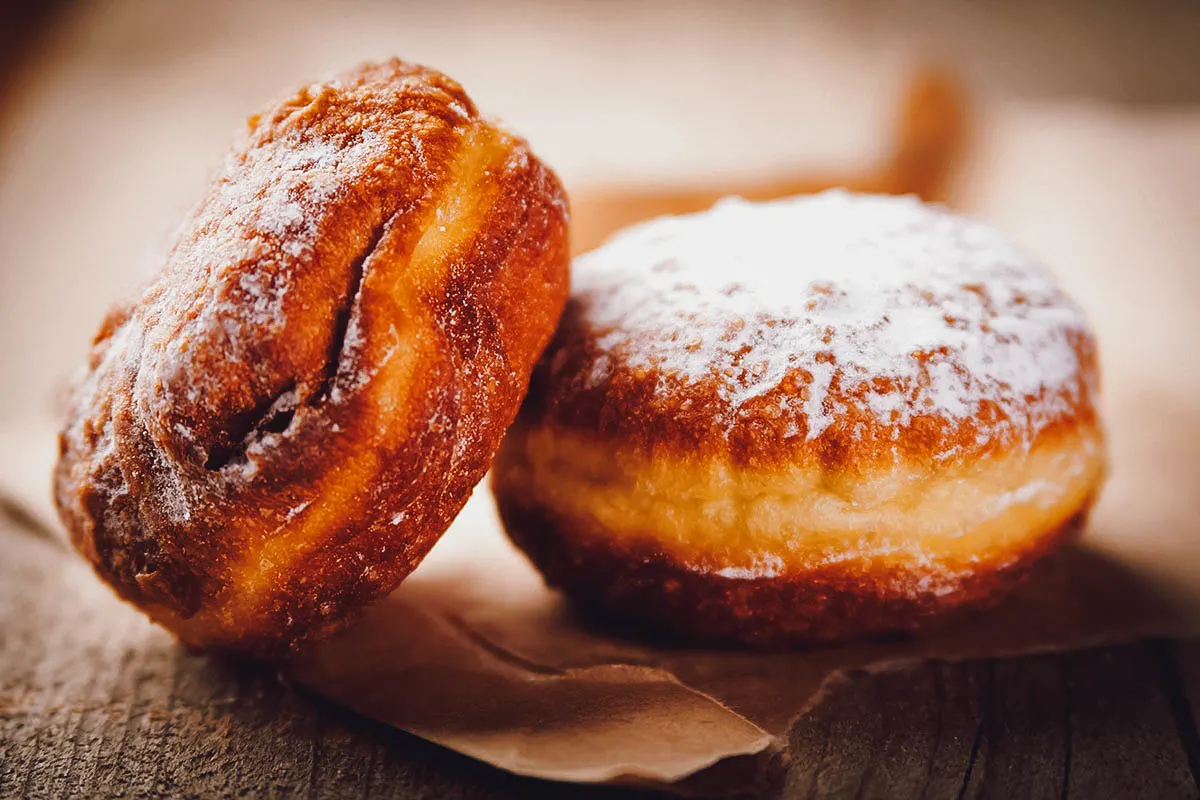
Photo by chirapbogdan
18. Baklava
Baklava is a famous pastry dessert that’s widely consumed in many countries throughout the Balkans, the South Caucasus, the Middle East, and Central Asia. It’s made with layers of filo pastry filled with chopped nuts and sweetened with syrup or honey. Its precise origins are unknown but it’s current form may have been created in the kitchens of the Ottoman Empire.
To prepare, multiple layers of buttered filo dough are laid out in a pan. A layer of chopped walnuts, pistachios, or hazelnuts is placed on top and covered with more layers of filo. It’s then cut into small pieces and baked before being soaked in a syrup made with water, sugar, and lemon.
Baklava is served at room temperature and often garnished with ground nuts. It’s enjoyed in many parts of the Balkans but especially in Bosnia and Herzegovina where it’s considered a special holiday dessert. In Bosnia, baklava is known as ružice or “rose baklava”.
RECIPE: Baklava

19. Krempita
Krempita refers to a soft custard and chantilly cream cake that’s popular throughout the Balkans and Central Europe. It goes by different names and exists in many variations, though it’s always made with a puff pastry base and custard cream. It’s also commonly referred to as vanilla slice or custard slice.
In Croatia, it’s called kremšnita with two of the most popular versions being Samoborska kremšnita and Zagrebačka kremšnita. Samoborska kremšnita is made with a puff pastry top and a predominantly custard cream filling, while Zagrebačka kremšnita is topped with chocolate icing instead of puff pastry.
In Serbia and Bosnia and Herzegovina, krempita is made with puff pastry dough filled with pure thick custard. In Slovenia, it’s called kremna rezina and typically associated with the town of Bled.
In Montenegro, Kotorska krempita or Kotorska pašta are the most popular versions of this cream cake. They differ from other versions in that they’re made with three layers of dough and two layers of cream.
RECIPE: Krempita
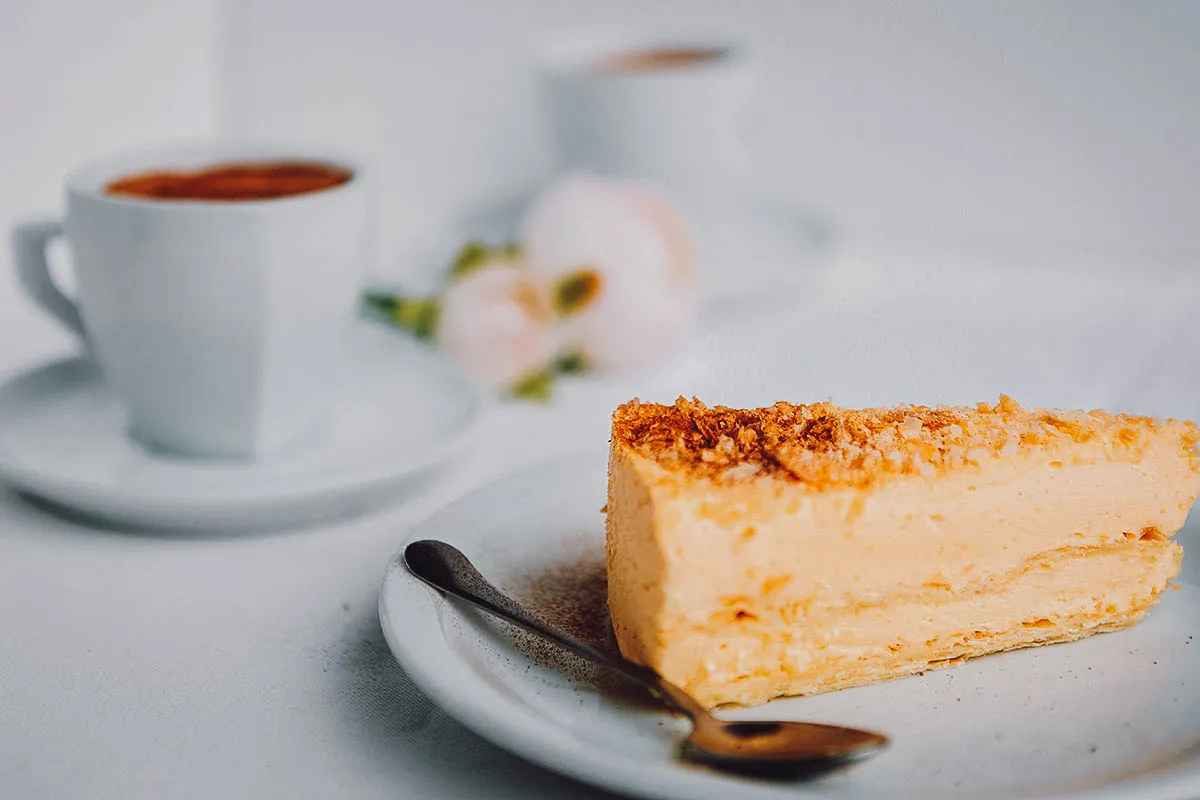
Photo by Mina3686
20. Rakija
Rakija (or rakia, rakiya, raki) is the collective term used for a family of fruit spirits widely consumed in the Balkans. It’s made using a variety of fruit like plum, grape, apricot, or mulberry, and typically contains an alcohol content of about 40% ABV. When produced at home, which is common, it’s often higher.
Rakija is by far the most popular spirit in many Balkan countries. It’s been the national drink of Serbia for centuries. In Bulgaria, twelve brands of Bulgarian rakiya enjoy PDO (Protected Designation of Origin) and PGI (Protected Geographical Indication) status.
In Croatia, a type of herbal rakija called travarica is often served at the start of meals with dried figs. Depending on where you go, you’ll find rakija flavored with different ingredients like anise, myrtle, walnut, mistletoe, honey, plum, and pear. Like Bulgaria, three Croatian rakijas enjoy PGI status.
In Albania, rakia is deeply rooted in tradition. It’s produced everywhere with one of the most famous rakia-making regions being Skrapar in southern Albania. Skrapar rakia is considered the best and a must at many Albanian festive ceremonies.
RECIPE: Homemade rakija

Photo by mroczka
FINAL THOUGHTS ON BALKAN FOOD
I’m feeling pretty full after writing this article. Balkan food isn’t the most Instagrammable but who cares?
For me, the best food isn’t about pretty pictures or presentation. It’s about filling you up, warming your heart, and building a sense of togetherness with family and friends.
It’s for those reasons why I like to think of Balkan food as the European version of soul food. It may not be the healthiest or the prettiest, but it tastes delicious and it makes you feel good eating it.
Have you ever tried Balkan food? What did you think of it? Let us know in the comments below!
Cover photo by ccat82. Stock images via Depositphotos.


Steve
Thursday 1st of June 2023
I’m sorry that so many people are nit-picking your article; it’s human nature to try and show everybody else that you know more than the one presenting the info. Anyway, I’m doing a 23-day motorcycle trip through the Balkans, and your article gives me some general info on what I can expect food-wise. My mouth was watering and I can’t wait to launch this trip! The pictures are awesome too!
JB & Renée
Friday 9th of June 2023
Happy you appreciated the article Steve! Enjoy your trip. That sounds amazing.
Anchy
Tuesday 14th of February 2023
I grew up on Balkan food. I tried almost all world cuisines. While I do respect other cuisines and some meals I even love, nothing can compare to Balkan food. I don't care if it's pretty or not, it's full of taste and you can't be hungry after it. It has soul. Now, when I live abroad, I miss so much our dishes. While I do make my own dishes, the quality of ingredients are simply not the same as at home.
JB & Renée
Wednesday 15th of February 2023
Thanks for sharing your experiences Anchy. Are there any specific dishes you'd like to recommend? We'll be spending a good amount of time in the Balkans this year so we'd love to try your suggestions.
Chris
Saturday 1st of October 2022
Although this article gives general information about the foot from the countries in the Balkan peninsula There are some mistakes from geographically(Moldova?), political(Kosovo) and cultural sense. Being Bulgarian, I can add one absolutely famous food - kiselo mljako. Or sour yogurt. Nothing in common with the shelf yogurt sold the the western supermarkets and proven food for Iongevity. I don't live in my country now but in my family we continue to make it at home constantly.
JB & Renée
Sunday 2nd of October 2022
Thanks for the insightful comment Chris! I'm not an expert on the Balkans, but I did do a lot of research for this article. According to Brittanica:
"Moldova—although located north of the Danube River, which is frequently cited as the region’s northeastern geographic dividing line—is included in the Balkans under some definitions by virtue of its long-standing historical and cultural connections with Romania. However, Moldova is politically and economically oriented more toward other onetime republics of the former Soviet Union than it is to the Balkan states."
Dardan
Tuesday 23rd of August 2022
Hello,
You forgot Flija, which is to be found only in Kosovo and Albania.
JB & Renée
Friday 26th of August 2022
Thank you for the recommendation Dardan! We'll be spending a month in the Balkans in early 2023 (mostly in Croatia) so hopefully we can explore Albania and/or Kosovo to try it.
Travelguy37
Thursday 18th of August 2022
Kosovo is a part of Serbia. So many errors here.
Dardan
Tuesday 23rd of August 2022
@Travelguy37,
Being a "Travelguy" and saying Kosovo is Serbia is an error in itself.
JB & Renée
Saturday 20th of August 2022
This is a contentious political issue that I'm not going to get into in an article that celebrates food. If anyone wants to learn more about this issue, then you can read about Kosovo-Serbia relations here: Britannica | Wikipedia